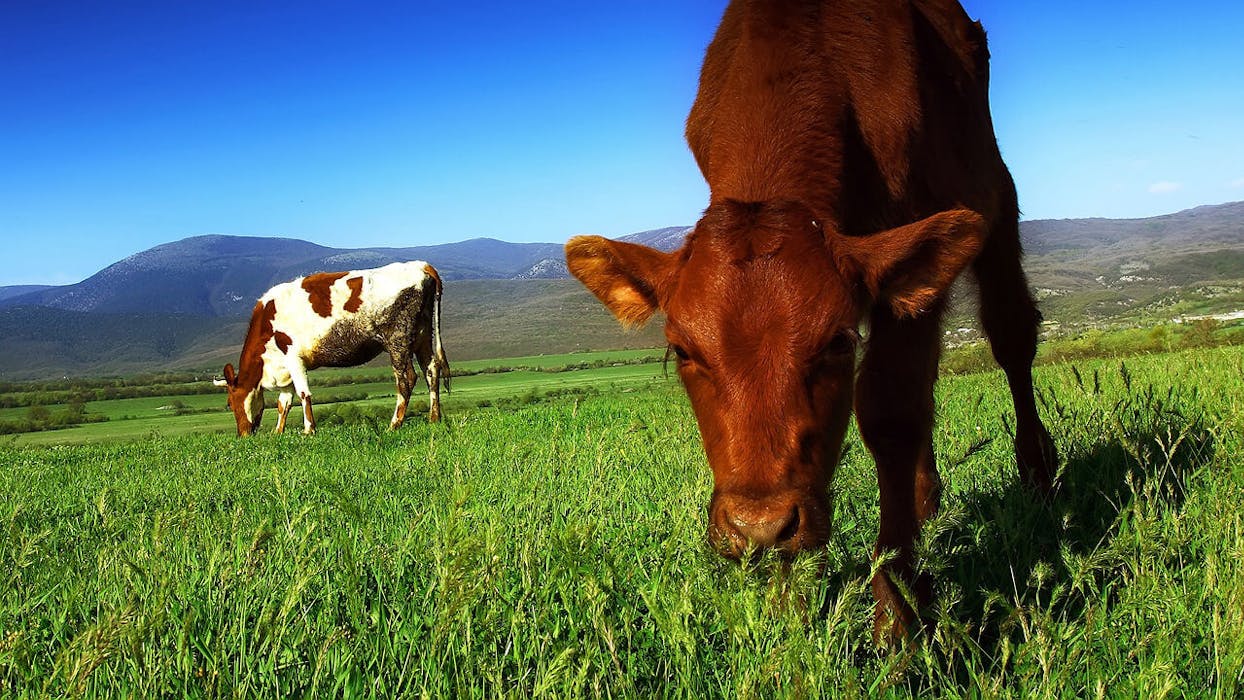Why Grass-Fed Beef Sets The Benchmark For Quality
What you need to know about grass-fed beef and how Canadian meat patterns have evolved.
 Back
Back






What you need to know about grass-fed beef and how Canadian meat patterns have evolved.

Meat has long been an essential part of North American diets. Going back to the earliest period of European settlement in Canada, meat was valued as much for its ability to deliver a high protein diet to hard-working farmers and lumberjacks as it was for its flavour. Indeed, when a distinctive Canadian cuisine began to emerge, it almost always centered on some kind of meat. While few Canadians now stock up on wild game like duck or venison, any Canadian cookbook worth its salt contains dozens of recipes for dishes that involve beef, pork, chicken, and maybe even buffalo.
What many Canadians don’t know is that the beef that their ancestors would have used in their tourtieres, pot roasts, and stews doesn’t taste at all the same as the beef they buy at the local supermarket. The first Canadian settlers to raise cattle in Canada would have fed their cows in the same way that Europeans had raised cows for thousands of years: by rotating them between pasturage in the summer and grass and alfalfa hay in the winter.
Much of the flavour in beef comes from the quality of the food the cattle have been raised on, and when cows ate a diet of local grasses (as they evolved over millennia to do), it imparted a distinct flavour to the meat. Because grasses are not as calorie-intensive as grains like corn, which makes up a high percentage of most industrial feeds, their meat was leaner, less fatty, and lower in calories.
An Evolving Food System
The twentieth century saw major changes in how cattle were raised in Canada, and this has directly impacted the quality of the meat Canadians eat. Where it was once common to raise cattle on small family farms, or on large pasture ranges in the west, developments in technology and agricultural theory made it possible for large numbers of cows to be raised in concentrated feedlots.
This was heralded as a breakthrough in food security, insofar as it made it easier for a large volume of beef to be produced, but it also had less salutary side effects: more cows produced more waste, and restrictions in space meant that cows became more sedentary. This increased the risk of disease, and led to meat that was higher in fat and less rich in nutrients.
But while feedlot-raised beef continues to dominate dinner tables across North America, it is no longer the only option available. As consumers become more aware of the quality and animal welfare issues that plague the feedlot system, they are becoming hungry for alternatives, and this is fuelling a resurgent interest in grass-fed beef.
Grass-fed beef comes from cows raised on a more natural diet of pasturage throughout their lives, guaranteeing that meat that is nutritious, flavourful, lean, and much closer in taste and texture to the beef our ancestors would have eaten.
The Challenges Of Finding Grass-Fed Beef
Though grass-fed beef is clearly superior to feedlot-raised varieties, the challenge many shoppers face is where to find it. Even in large cities, it can be difficult to know whether the beef you are buying at a grocery store or butcher comes from grass-fed cows, and the speciality providers who take pride in offering clear information about where their meat is sourced from are often extremely pricey.
This is where grass-fed local meat delivery providers like truLOCAL come in. With truLOCAL, you don’t need to spend time and money searching for local grass-fed meat at supermarkets and butchers — the best local Ontario meat is just clicks away, thanks to our innovative delivery service.
TruLOCAL Makes Finding Premium Grass-Fed Beef Easy
At truLOCAL, we are proud to offer customers the opportunity to have high quality local Ontario meat delivered straight to their door in regular meat boxes. Shoppers can choose which truLOCAL products they want in their order using our innovative points system, and their meal box will arrive at their house, apartment, gym, or office within two days (or on the date they order it for).
Because our boxes are refrigerated, customers don’t need to worry about being home to receive the order, as it will stay fresh all day. All our meat is sourced from trusted local providers who are committed to healthy, sustainable farming, so with truLOCAL you always know exactly where your meat is coming from.
This makes truLOCAL the easiest way to buy Ontario grass-fed beef. Shoppers who want to get high quality local grass fed beef simply need to put together a meal box filled with items like grass-fed ground beef, or round, flank, striploin, and ribeye steaks and set the order to repeat on a weekly, bi-weekly, tri-weekly, or monthly basis. An order can be made solely with grass-fed beef, or shoppers can mix and match with other high quality truLOCAL products like buffalo, chicken, pork, sausages, and ethical wild-caught fish from Caudle’s Catch.
Either way, with truLOCAL you have a wide range of choice and absolute transparency, which means you can ensure that the food you are buying is good for you and good for the planet.
If you want to improve your diet, one of the best things you can do is put together your meat delivery order and switch from feedlot beef to grass-fed beef right away. With so many grass-fed options for you to choose from, there is no need to change your favourite recipes. As soon as you taste the rich, subtle flavour of genuine Ontario grass-fed beef, you’ll never want to go back.
Beef has long been a central part of Canadian food culture, and many essential dishes in Canadian cuisine rely on the kind of high quality pasture-raised beef that Canadians would have eaten for generations. But grass-fed beef is the best choice for any meal that calls for beef — including the many incredible new beef-based dishes that have come to Canada in the last hundred years with immigrants from around the world. If you want to make sure you are serving your guests the best, most authentic beef in the country, make sure it is Ontario grass-fed beef from truLOCAL. Get in touch with us today, and find out how you can start your first order!
Posted on January 20th, 2023